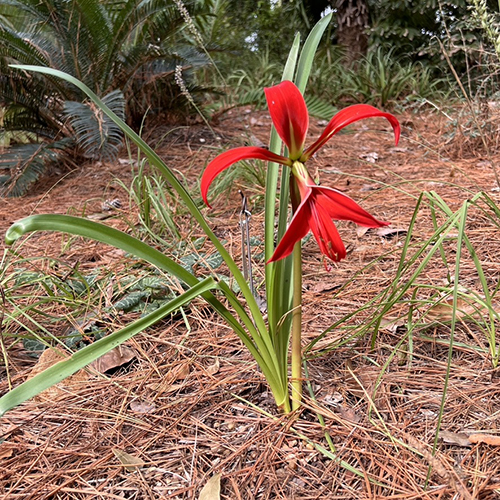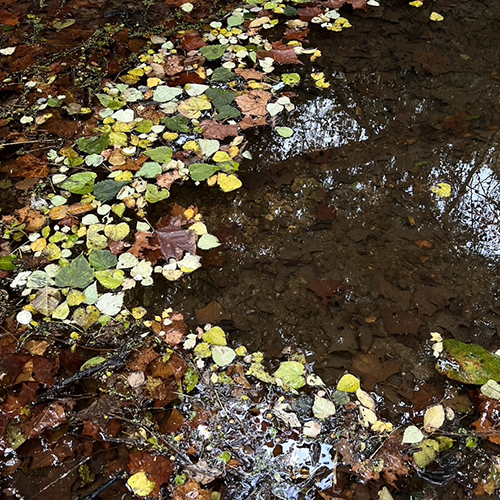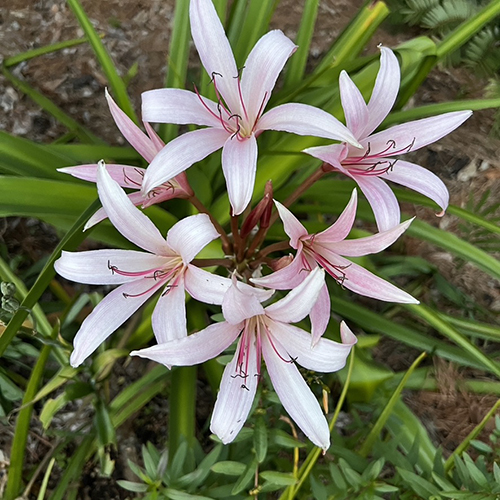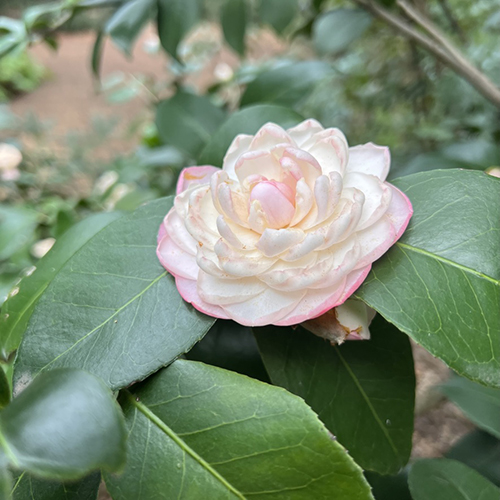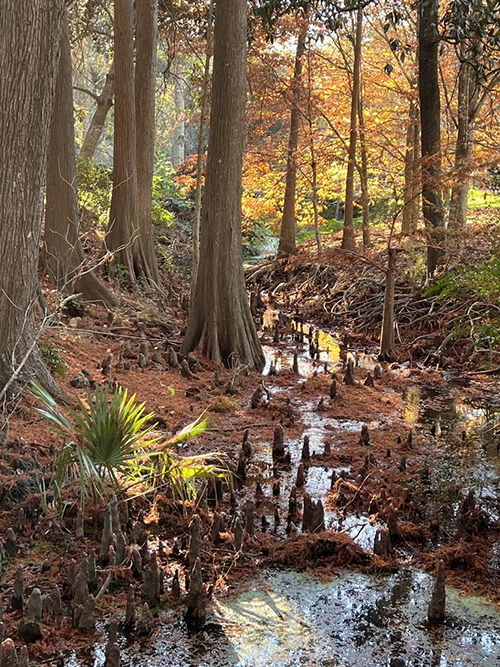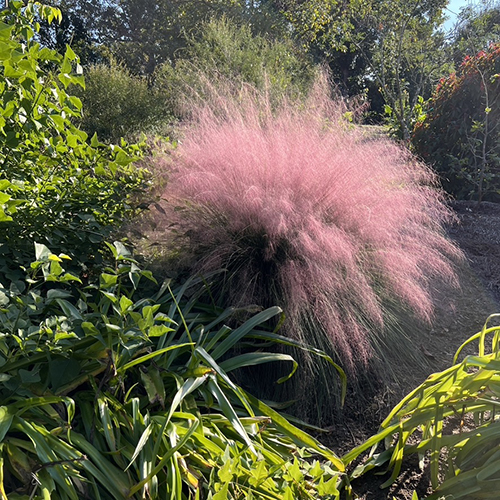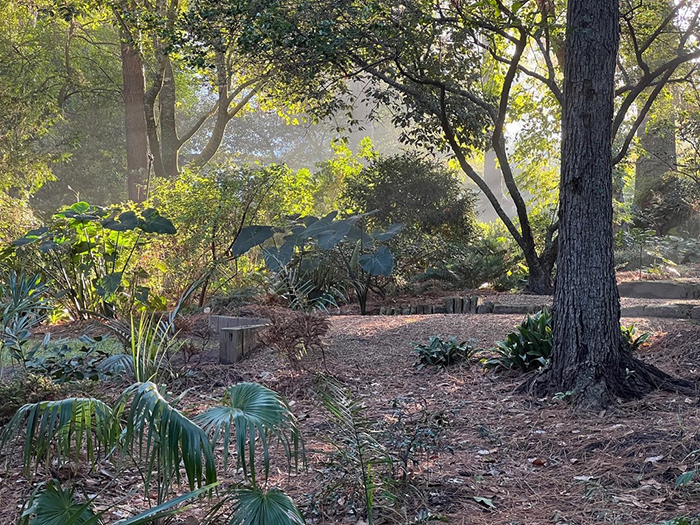In the heat of the summer, as cool season bloomers are a distant memory, the gingers begin to hit their stride. Hedychium, Kaempferia, Curcuma and Globba erupt in impressive displays of form and color, making for prime photo opportunities for our guests. Pictured here is Hedychium coccineum ‘C. P. Raffill’ (common name, Hedychium) with its fantastic red-orange inflorescences and Curcuma elata (common name, Hidden Ginger) which flowers first as it returns from dormancy. Though impressive, this summer experience is quite easy to miss due to the short-lived nature of many ginger blooms and the fact that many are tucked away in shady nooks or heavily mulched beds.
Ferns occupy quiet shady woodland spaces, protected from summer heat by cooler microclimates. Under pines and savannah hollies, around camellias, piper and aspidistra, ferns are an indispensable component of John Fairey’s palette because of their wispy delicate texture and green hues. Visitors usually agree upon seeing the arching bronze new growth of the maidenhair fern, a new species collected in La Trinidad, Mexico. Even more spectacular is the big and blue Phlebodium pseudoaureum (rabbit’s foot fern), also collected in Mexico. Acres of pyrrosia and thelypteris, along with selaginella and ribbon fern, soften the landscape and scale down the summer heat.
